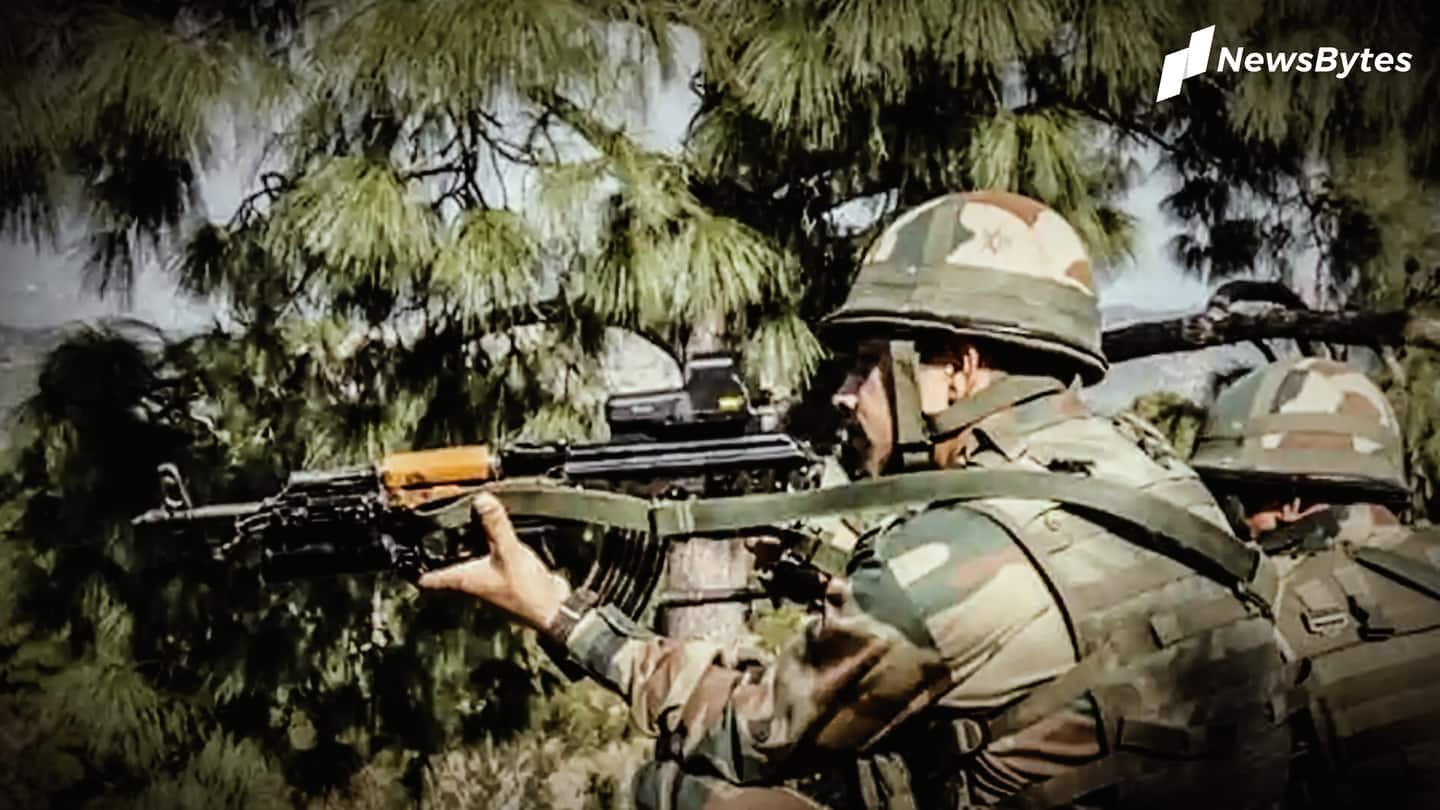
While LAC simmers with tensions, LoC being watched too
What's the story
Already engaged with an eyeball-to-eyeball conflict with China along the Line of Actual Control (LAC), the Indian armed forces have not lost sight of the Line of Control (LoC) from where Pakistan regularly launches attacks. While a two-front war is unlikely, the military is ready to deal with China and Pakistan simultaneously, people in the know told HT. Here are more details.
Background
Context: In violent face-off with China, India lost 20 soldiers
For the first time in decades, India and China were involved in a bloody conflict in Galwan Valley, a tough terrain in the Himalayas. 20 Indian soldiers were martyred in last month's episode, but there's little clarity about casualties of the People's Liberation Army. Some reports suggest China lost twice as many soldiers as India. After the violent face-off, a dialogue was launched for de-escalation, but a conclusion seems far-fetched.
What happened
Exploiting current "opportunity," Pakistan deployed thousands of troops along LoC
Assessing the current situation along LAC as an opportunity, Pakistan showed preparedness to step up hostilities with India. An ET report said Pakistan has already moved two units of troops along LoC in Kashmir and Gilgit-Baltistan. Islamabad had not sent these many troops even after the Balakot airstrikes of February 2019. It's learned that the Chinese held talks with Pakistani officials too.
Terrorism
Reportedly, China is supporting terror-groups to incite violence in Kashmir
Citing intel sources, the report added that China spoke to the terrorist outfit Al Badr, which is infamous for inciting violence in Kashmir. China could be lending support to revive the organization, sources said. While China getting involved with terror outfits springs some surprise, Pakistan's behavior is hardly astonishing. India knows Pakistan would indulge in antics if China turns hostile.
Findings
Years ago, parliamentary standing committee was informed about China-Pakistan collusion
In 2014, a senior Indian Air Force (IAF) officer told the parliamentary standing committee that Pakistan is likely to step up hostilities if China were to get involved in an aggressive stand-off. Beijing, meanwhile, might not interfere between India and Pakistan's tensions. However, reports about China reviving terror outfits hint at collusion between Islamabad and Beijing. This joint threat is described as "Contingency-III."
Views
As it turns out, a two-front war isn't entirely impossible
Some, including Lieutenant General DS Hooda (Retd.), a former Northern Army commander, believe three nuclear-armed nations wouldn't go to war together. But others haven't dismissed this event, all together. In 2018, a senior army officer told the standing committee that a two-front war is not entirely impossible. He mentioned Pakistan and China were modernizing their armed forces and India must do the same.
Gaps
Experts have time and again spoken about preparing armed forces
Another report in 2019 also stressed on preparing IAF for a combined threat. "In order to meet the challenges of a two-front war, IAF has to be equipped with essential combat capabilities," the report had said. Fortunately, some of these gaps have been filled. New jets, heavy-lift helicopters, new air defense systems have been inducted; and military has been given new artillery guns.
Details
India also conducted drills to understand its strength
Of late, the military conducted exercises to judge preparedness too. In 2018, the Gaganshakti drill adjudged IAF's readiness for an attack from two fronts. IAF rose up to the occasion, moving its frontline assets from western to eastern sector within 48 hours. An official said while a two-front war seems unlikely, the military is prepared to tackle "a combined threat from China and Pakistan."